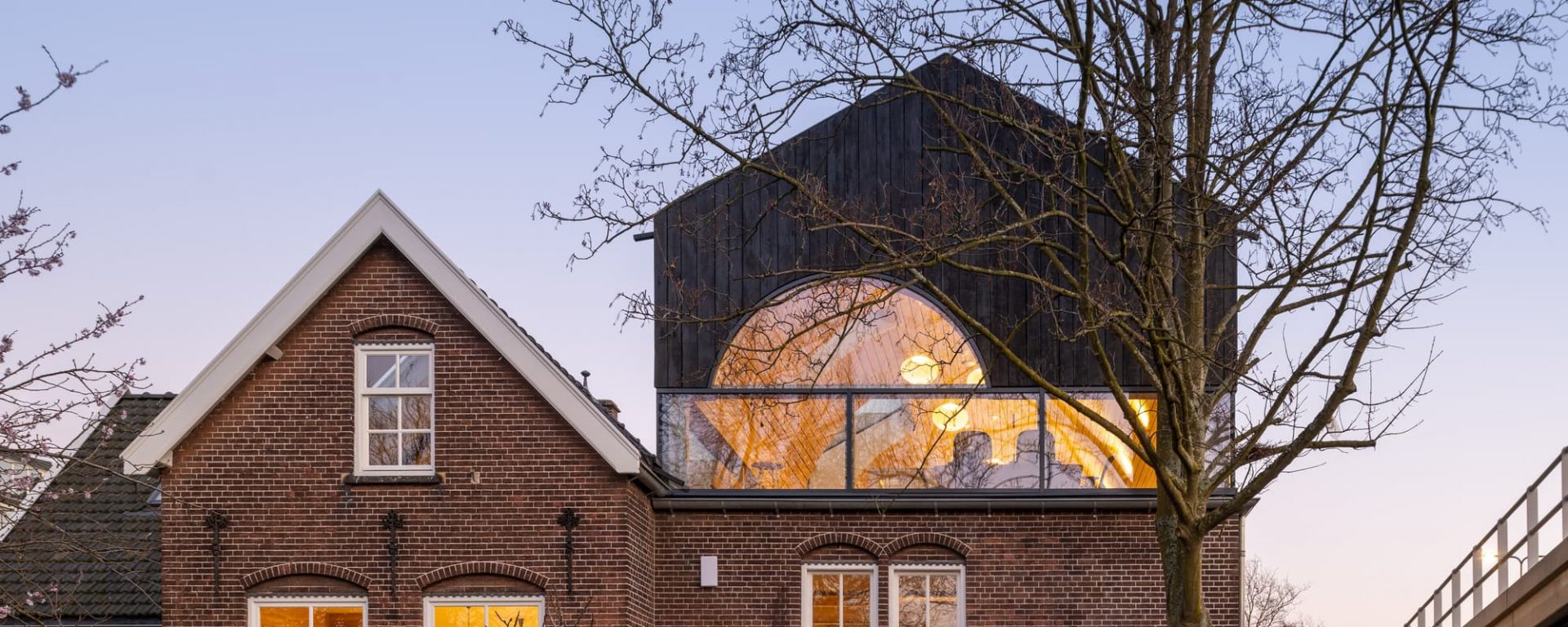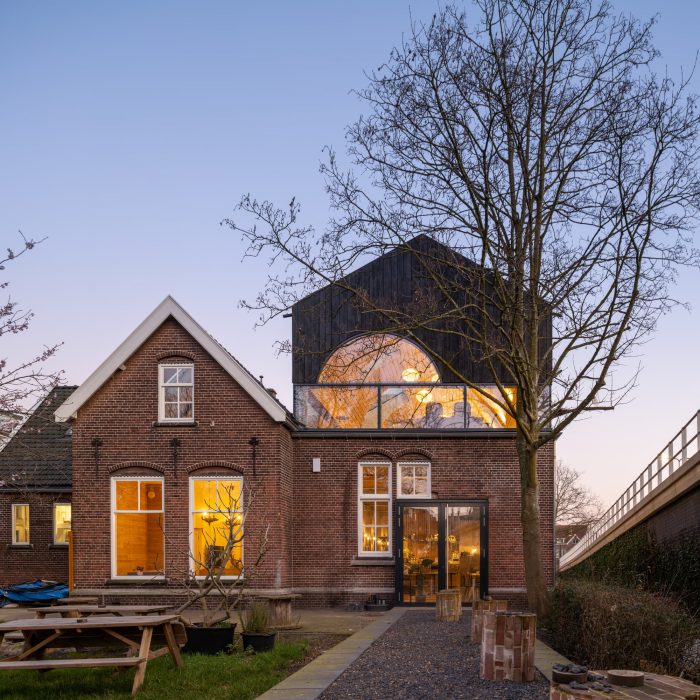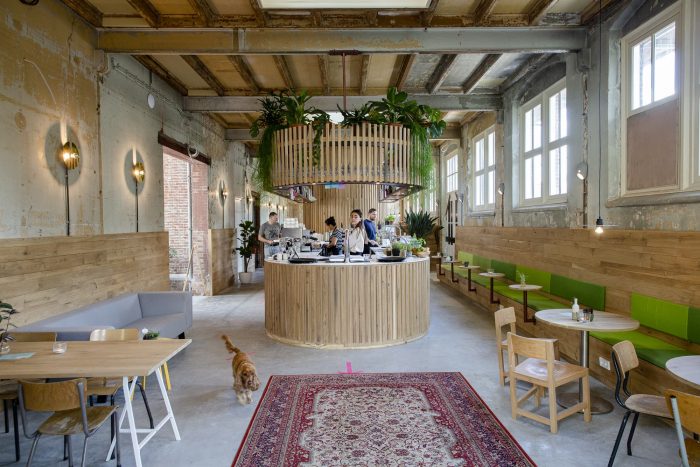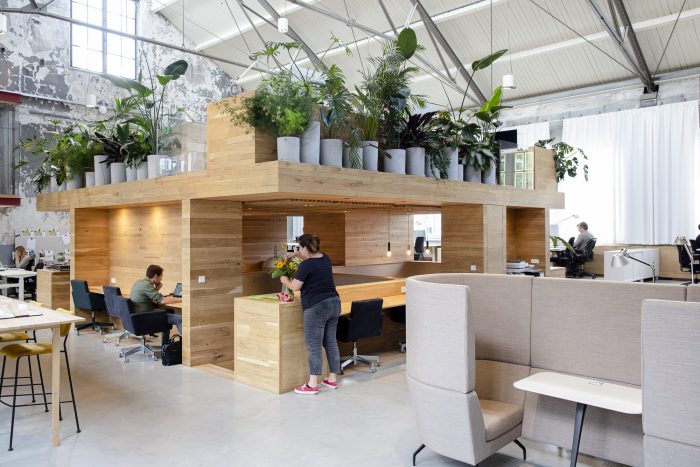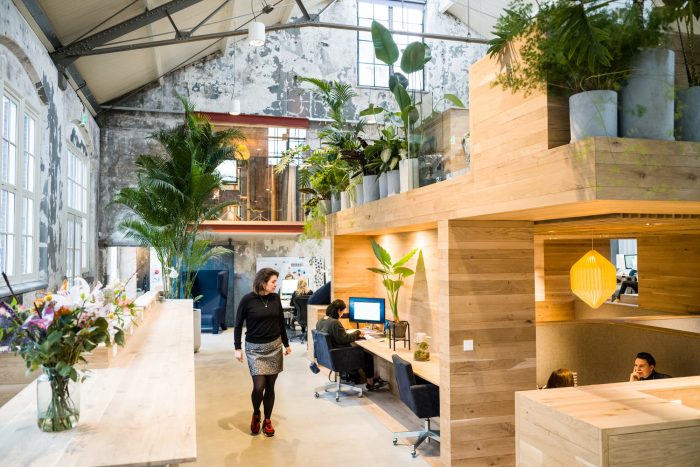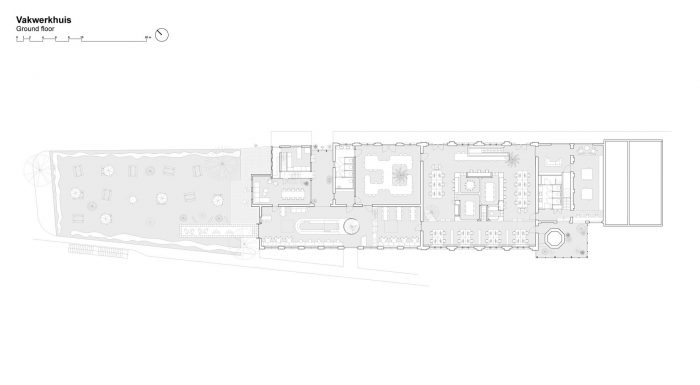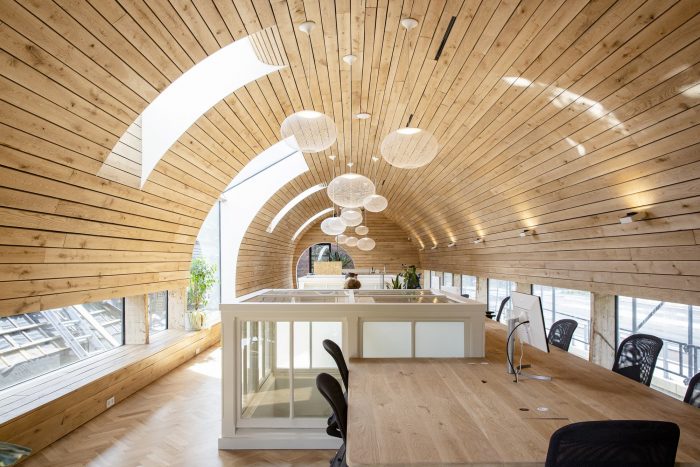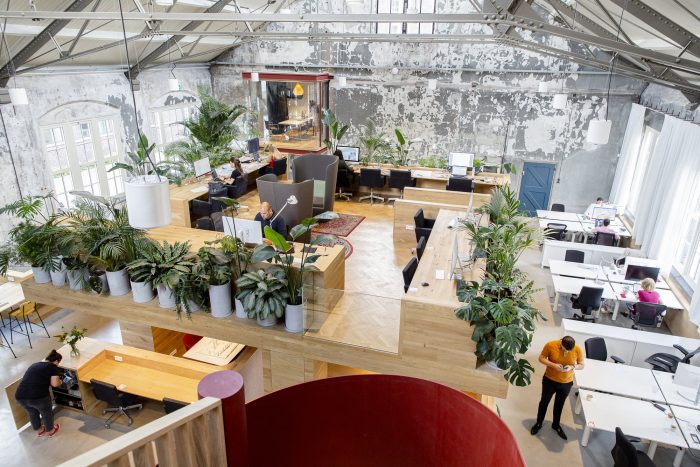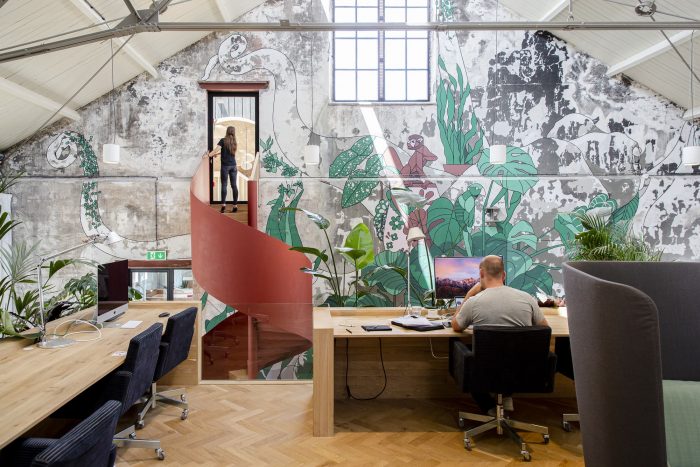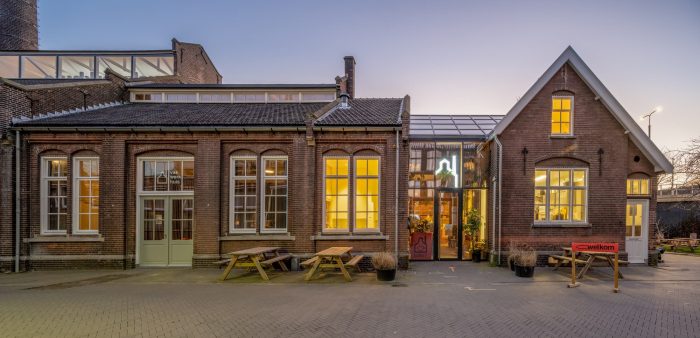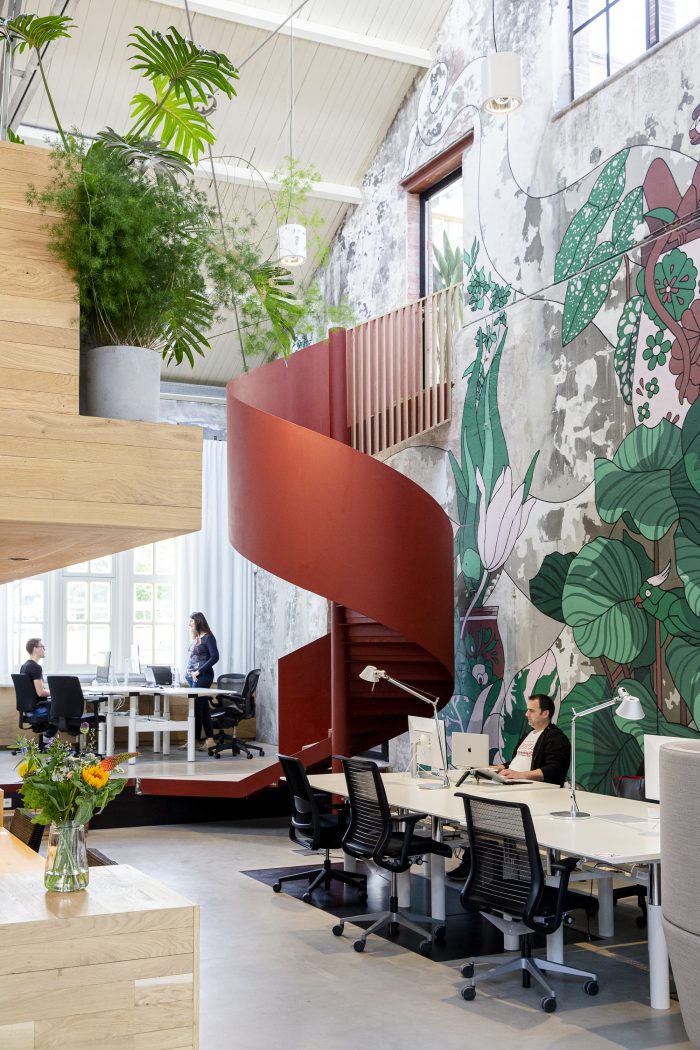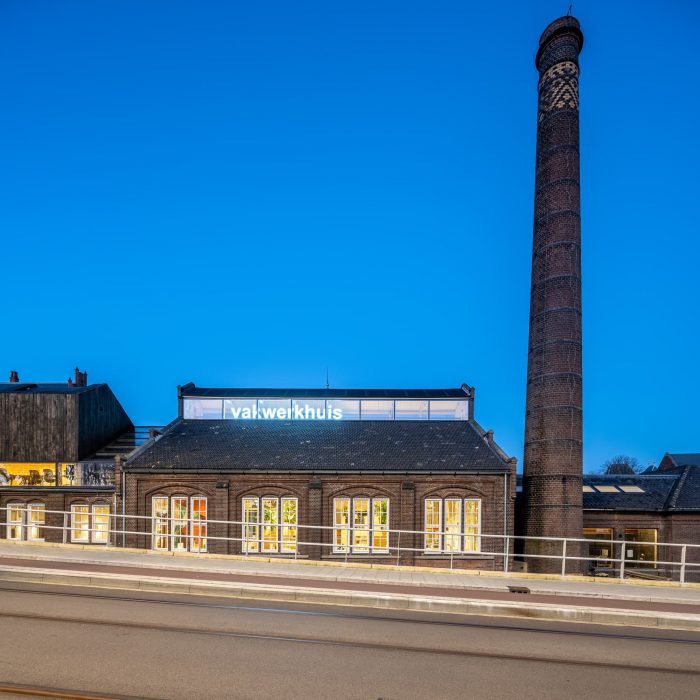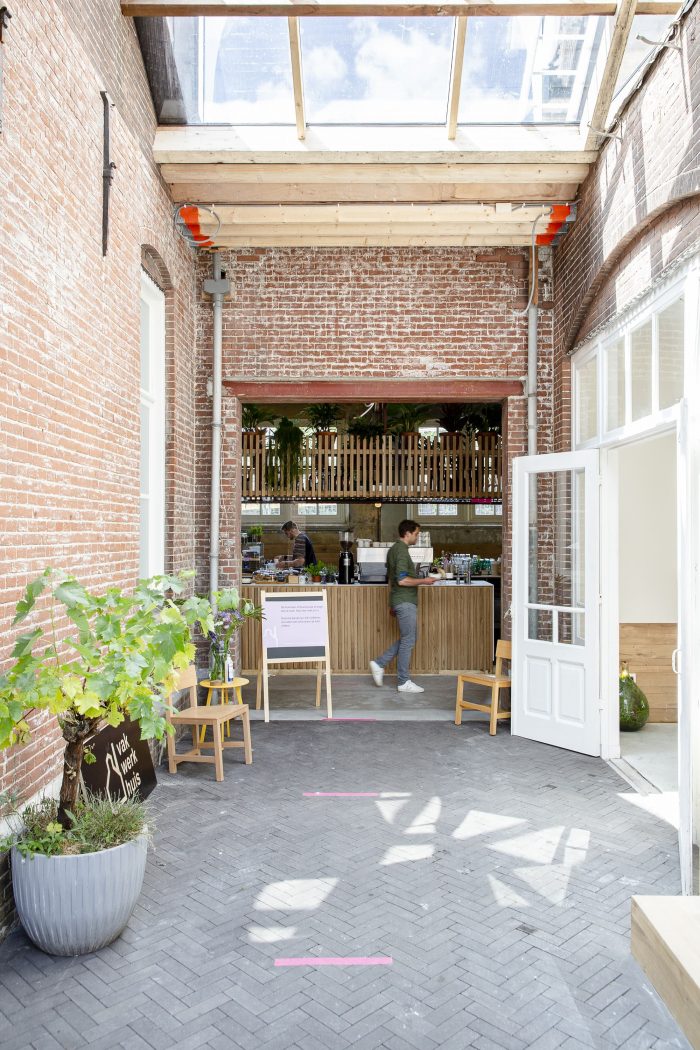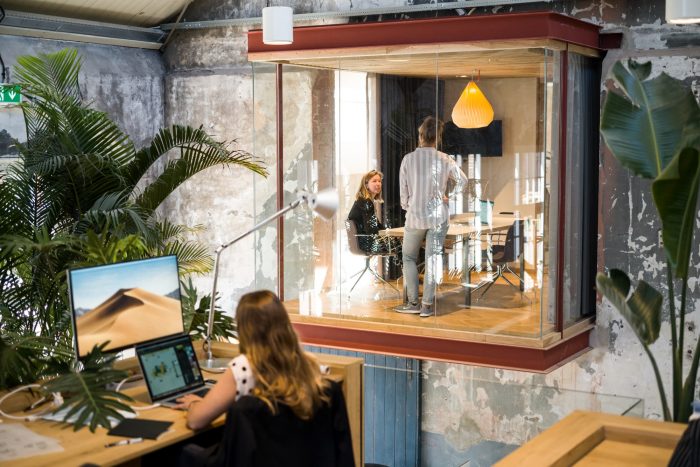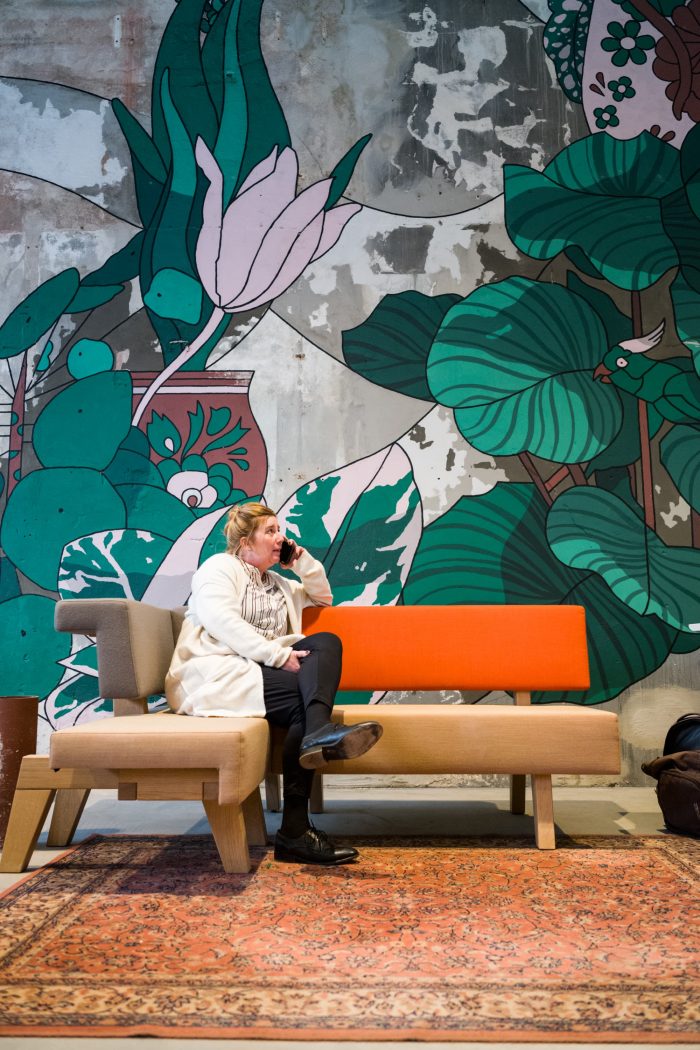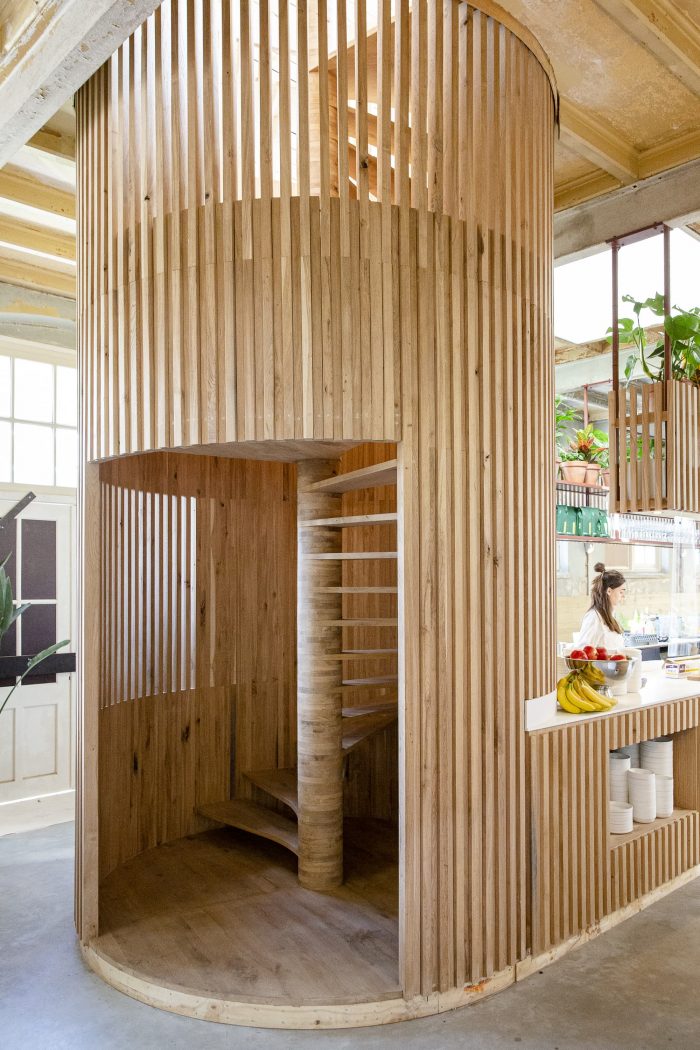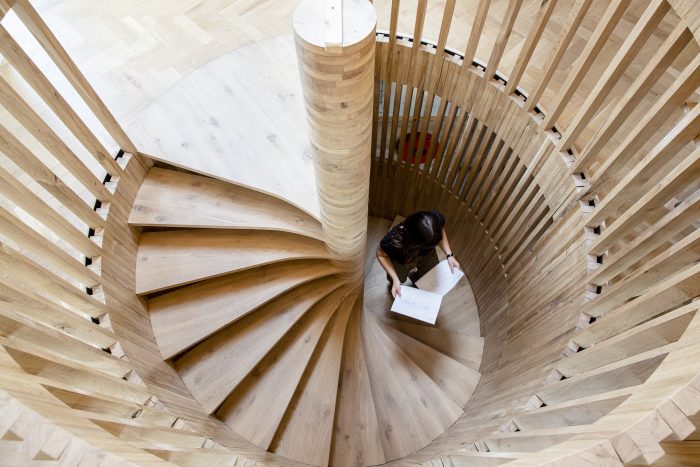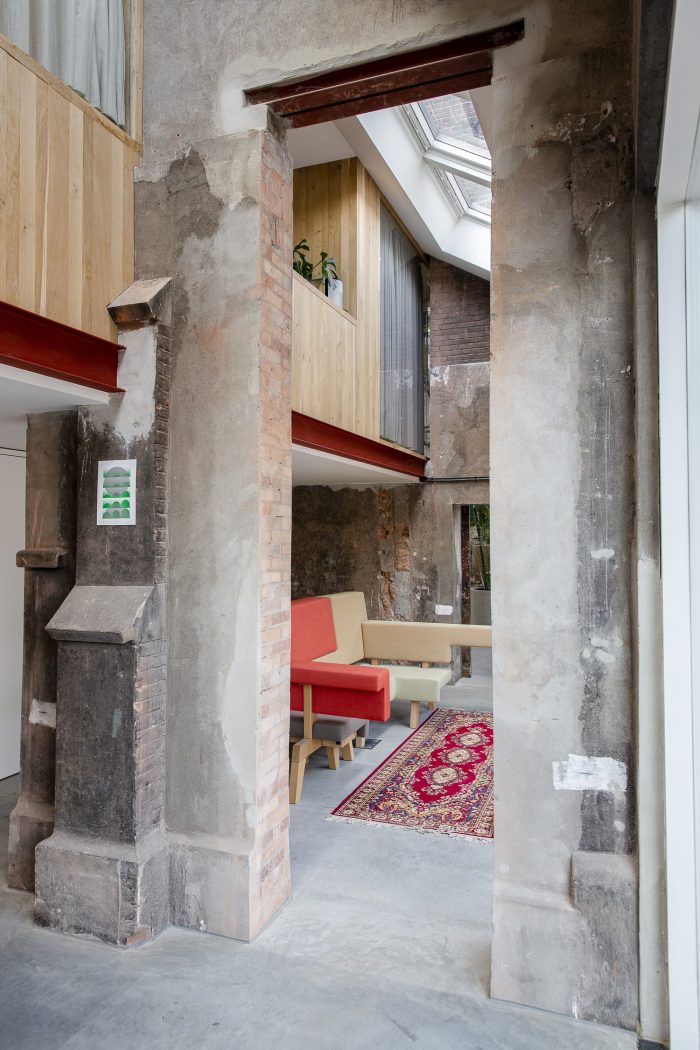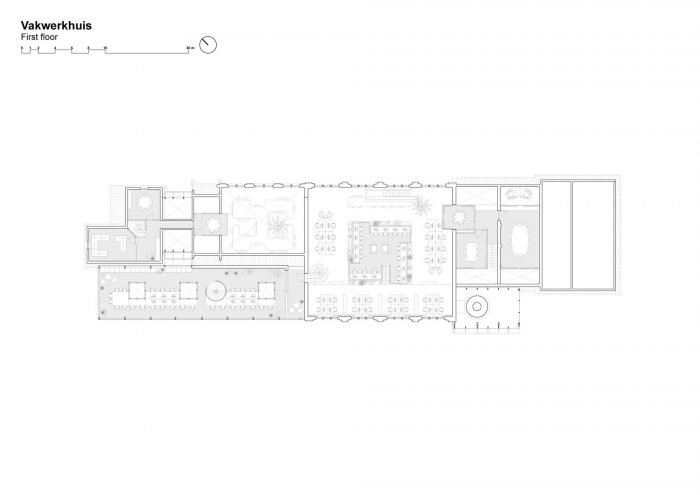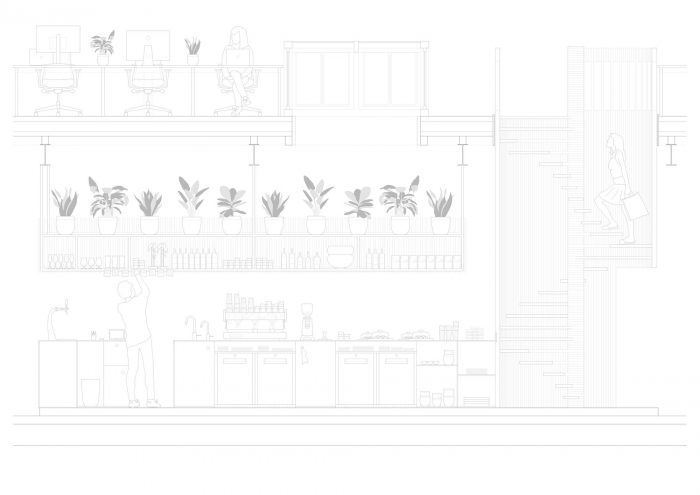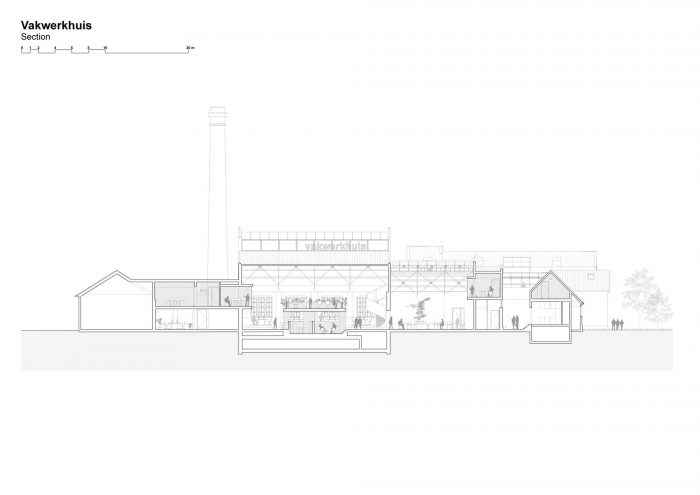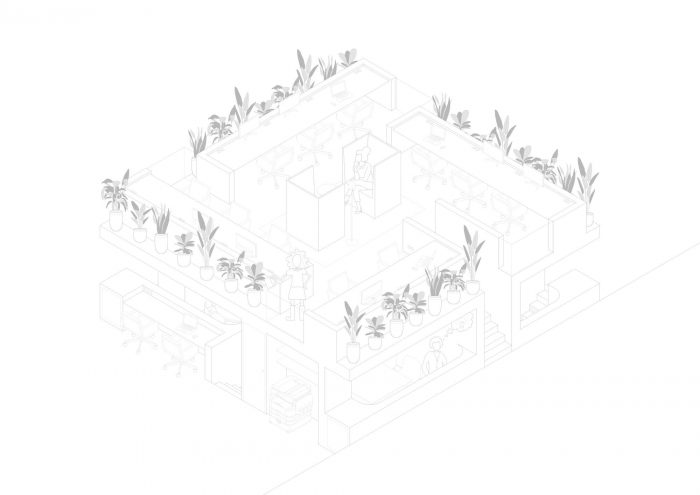从Vakwerk Architecten开始的那一天起,他们就对自己未来的办公室有了明确的设想。当他们偶然发现一个曾经是代尔夫特理工大学主要能源来源的旧锅炉房时,他们就决定将其改造成一个充满活力的联合办公空间,形成代尔夫特中心和大学校园之间的联系。改造后的空间将成为他们自己的公司和当地企业家的一个鼓舞人心的家。可持续性是主要的原则,通过尊重其工业特性、材料的再利用和使建筑尽可能的节能来实现。Vakwerkhuis现在是一个充满活力的社区,再一次充满了活力!
From the day Vakwerk Architecten started, they had a clear vision for their future office. Once they stumbled upon an old boiler house, once the main source of energy for the Delft University of Technology, they were set on transforming it into a dynamic co-working space that would form a link between the center of Delft and the university campus. The transformed space was to become an inspiring home for both their own company and local entrepreneurs. Sustainability was the main principle achieved by respecting its industrial character, the reuse of materials, and making the building as energy efficient as possible. The Vakwerkhuis is now a vibrant community, once again buzzing with energy!
旧的锅炉房,或称Ketelhuis,已被重新命名为Vakwerkhuis–荷兰语中半木结构房屋的意思,也是对公司名称的戏称–现在是一个鼓舞人心的工作和协作场所;一个真正的 “联合办公空间2.0″。大楼里有一百多个工作空间和八个会议室,每个空间都有自己独特的特点,供同事和访客使用。白天,Vakwerkhuis忙着接待同事和咖啡馆的访客,晚上和周末,这里就会挤满辩论会、聚会、课程、音乐或瑜伽。
The old boiler house, or Ketelhuis, has been renamed the Vakwerkhuis – Dutch for half-timbered house and a play on the company name – and is now an inspiring place to work and collaborate; a real ‘co-working space 2.0’. The building houses over one hundred workspaces and eight meeting rooms, each with its own distinct character and used by both co-workers and visitors. During the day, the Vakwerkhuis is busy with co-workers and visitors of the café, and in the evenings and weekends it fills up for debates, parties, courses, music or yoga.
这座有100年历史的建筑由几个大厅组成,这些大厅以前是放置锅炉和发电机的地方,并以其独立的老烟囱为标志。新的楼梯、画廊和内部凸窗将这些空间相互连接起来。该建筑的特点通过一些干预措施得到了强调,如增加开口以创造新的视野和增加透明度,用玻璃和红色工业钢或实心橡木覆层执行的固定元素来丰富内部,作为对现有砖和钢的对比。大件物品被自由放置,如咖啡吧和不朽的老大厅内的木制夹层 “鹰巢”。增加的玻璃入口和烧焦的木材屋顶扩展在视觉上标志着该建筑的再生。
The 100-year-old listed building consists of several halls that previously housed boilers and generators and is marked by its free-standing old chimney. New stairs, galleries, and internal bay windows have interlinked these spaces. The building’s character is emphasized through several interventions, such as adding openings to create new views and increase transparency and enriching the interior with fixed elements executed in glass and red industrial steel or solid oak cladding, as a contrast to the existing brick and steel. Large pieces are placed freely, such as the café bar and the timber mezzanine ‘Eagles Nest’ within the monumental old hall. The addition of the glazed entrance and the charred timber roof extension visually mark the regeneration of the building.
考虑到它的年龄,该建筑已经证明自己是一个可持续的结构。然而,仍有许多地方需要改进。Vakwerk Architecten始终遵循一种功能性的方法,注重每个空间的形式和使用。重点是在保持现有建筑和提高建筑的固有特性的同时,找到必要的修改之间的平衡。通过一些精确的干预措施–如采用新的混凝土地板和热泵加热和冷却系统,用双层玻璃更新旧窗户,以及对标志性的屋顶结构进行保温,建筑的能源性能被提高到当代标准。
Considering its age, the building had already proven itself as a sustainable structure. Yet, there was still a lot to improve. Vakwerk Architecten consistently followed a functional approach that focused on the form and use of each space. The emphasis was on finding the balance between the necessary modifications while keeping the existing architecture and enhancing the building’s inherent character. With a few precise interventions – such as implementing new concrete floors with a heat pump-generated heating and cooling system, renewing old windows with double-glazed ones, and insulating the iconic roof structure, the energy performance of the building was raised to contemporary standards.
设计在很大程度上是由循环性驱动的:最大限度地利用现有材料和物品。材料都是从其他建筑中抢救出来的,比如扩建部分的木质桁架就是从一个旧飞机库中取出的。木质人字形地板、横梁、橡木饰面和家具都来自回收网站,为循环性和绿色经济做出了贡献。
The design was very much driven by circularity: maximum use was made of existing materials and objects. Materials were salvaged from other buildings, such as the wooden trusses in the extension that were taken from an old hangar. The timber herringbone floors, beams, oak finishes, and furniture were sourced from salvage websites, contributing to circularity and the green economy.
Architects: Vakwerk Architecten
Area : 1200 m²
Year : 2020
Photographs :Menno Emmink, Peter de Krom, Boudewijn Bollmann
Manufacturers : Ferm Living, iGuzzini, Gispen, Groene Vingers, HAY, LeenBakker, Moooi, Prooff, Seletti, Tiptoe, Tolomeo, Wever Ducre
Lead Architect : Paul Ketelaars
Structural Engineers : Strijbos
Lighting Consutlant : Deerns
Engineering Team : LBP Sight
General Contractors : Pools Aannemersbedrijf, Schoop Elektrotechniek, Van Iersel Installatiebedrijf, Hermeta Geveltechniek, de Graaf Klimaatechniek, DH Restauratie, Retail & Home Techniek
Project Leader : Rikkert van Bellen
Site Manager : Joost Pauwelussen
Interior Architect : Marloes Pieper
Technical Architect : Tim van Beurden, Peter Batenburg
Conservation : RAB
Development Partners : Coup Urban Producers
Building Installations : OverDeVest
Wall Artwork : Zenk One
City : Delft
Country : The Netherlands

